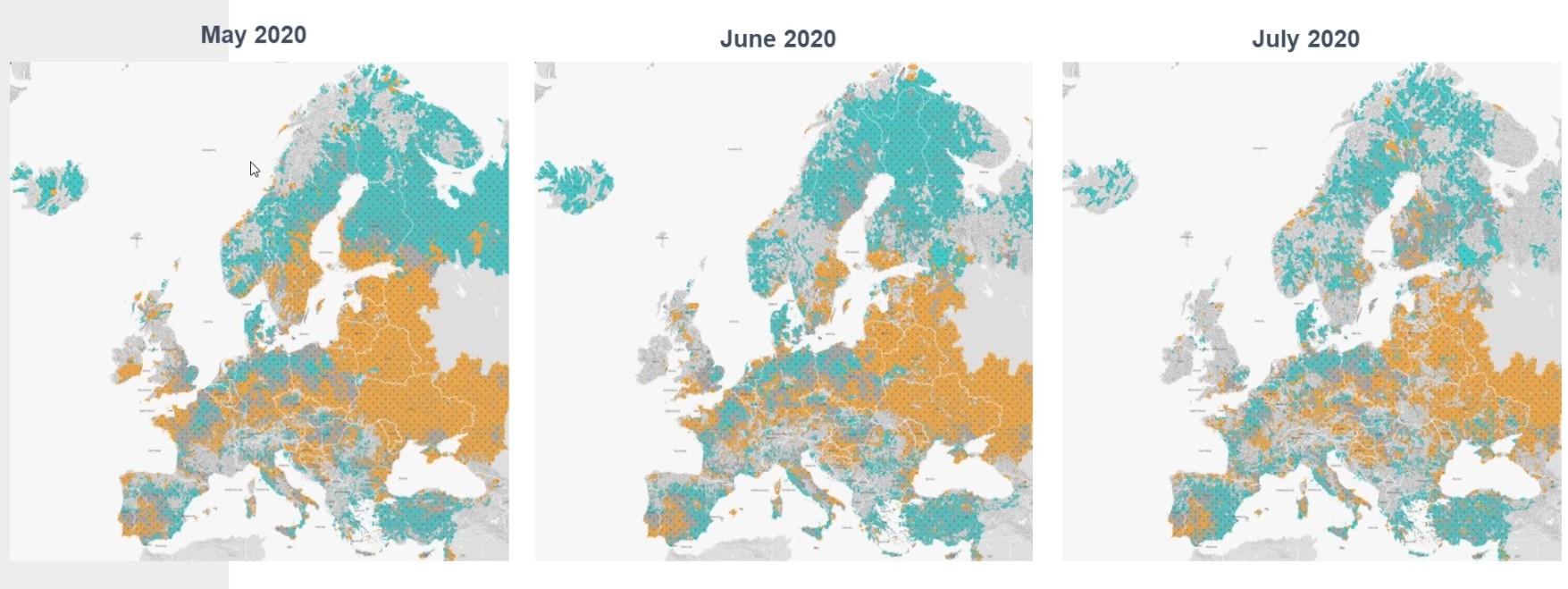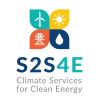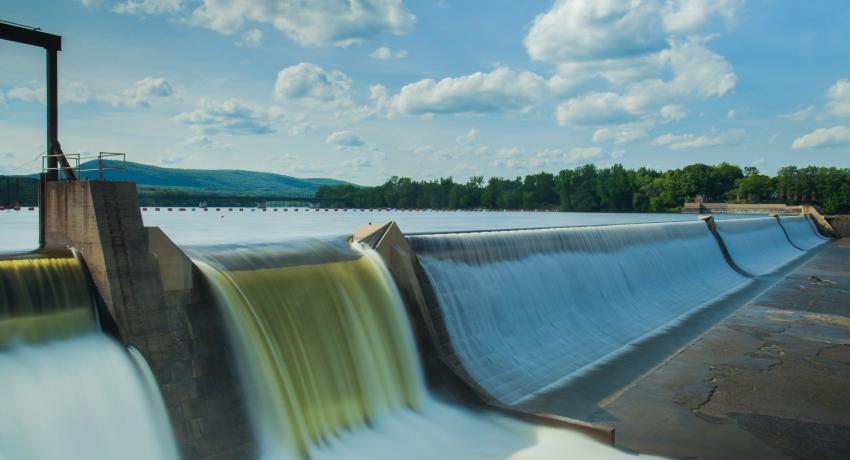There is currently more snow than normal in mountainous areas in Scandinavia, and snowmelt is set to lead to high water inflows to the region’s hydropower reservoirs in May, June and July, the latest forecasts show.
“In most of Scandinavia in May, the snow max anomaly will be above normal… but most of the snow in Norway, Sweden and Finland will melt as we move into June and July,” Ilias Pechlivanidis from the Swedish Meteorological and Hydrological Institute (SMHI) said in a webinar on 23 April, where he explained the latest S2S4E Decision Support Tool (DST) forecasts.

Ilias Pechlivanidis (SMHI) discussed hydro-climate forecasts for the hydropower sector at the S2S4E webinar.
There was more precipitation than normal in Scandinavia in January, February and March, and even though the winter was milder than normal, “most of this precipitation was still stored in the form of snow”, Pechlivanidis explained.
The latest forecasts also indicate that Scandinavia is likely to see wetter than normal conditions in May, while in June and July, precipitation levels are expected to be around the seasonal norm, although this forecast signal is not very strong, he said.
Scandinavia is also likely to see warm weather this summer, with temperatures in July forecast to be above average, Pechlivanidis added.
Meanwhile, in France and Italy, precipitation levels are expected to be above normal in May and below normal in June, while for Spain and Portugal, forecasts show drier than normal conditions and temperatures around normal for the summer season, he said.

Inflow anomaly forecasts for May-July 2020
Seasonal forecasts can be trusted
During the webinar, which was organised by the S2S4E project, Pechlivanidis also explained how to interpret the forecasts in the S2S4E Decision Support Tool, and said that in general, seasonal meteorological forecasts for up to two months ahead are to be trusted.
However, he highlighted that forecast skill varies strongly both geographically and seasonally, and hence any interpretation of the forecasts needs to be done for the region of interest, month and lead time.
For hydrology, meanwhile, “the forecasting skill is not necessarily correlated to the meteorological forecast skill. This is because the hydrological response is driven by the meteorological forecasts but depends also on the existing initial conditions of the catchment”, he said.
“Since the hydrological processes in general have a longer ‘memory’ than meteorological processes, hydrological variables have shown to have higher skill than meteorological variables. Consequently, we can generally put more trust in those,” Pechlivanidis added.
The webinar video (shown below) and presentation are now available in the dedicated S2S4E webinar series page.
Importance of hydropower sector in Europe
The S2S4E webinar was moderated by Ilaria Vigo, an environmental economist at Barcelona Supercomputing Center, and focused mainly on the hydropower sector. Hydropower is the world’s largest source of renewable energy, and accounts for about 16 percent of global electricity production, according to the International Hydropower Association.
In Europe, Norway is the biggest hydropower producer, with an installed capacity of more than 32 GW. Sweden is also a large hydropower producer, with about 16.5 GW of installed capacity, while Finland has a hydropower capacity of around 3 GW.
Other large, European hydropower producers are France (25.5 GW), Italy (23 GW), Spain (20 GW), Switzerland (17 GW), Austria (14.5 GW) and Germany (11 GW), according to the International Hydropower Association.
Written by Iselin Rønningsbakk / CICERO.


